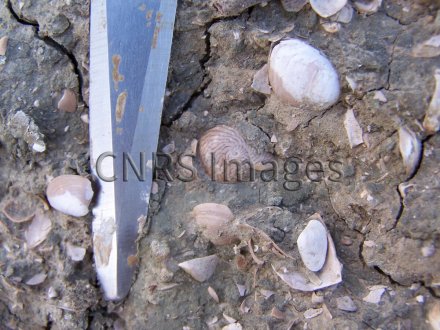Production year
2004

© Pierre-Olivier ANTOINE/CNRS Images
20070001_0116
Ces gastéropodes fossiles de la Formation Pebas datent du Miocène moyen (12 à 14 millions d'années). La qualité de leur préservation est à ce point exceptionnelle que leurs couleurs sont conservées. Au pied des Andes, près d'Iquitos (Pérou), des chercheurs ont découvert insectes, algues et autres micro-organismes fossilisés dans des morceaux d'ambre, véritables petits bijoux incrustés dans les berges de l'Amazone. Cette découverte prouve que la région a abrité une biodiversité luxuriante il y a 12 à 15 millions d'années et clôt ainsi un vieux débat sur le passé de l'Amazonie.
The use of media visible on the CNRS Images Platform can be granted on request. Any reproduction or representation is forbidden without prior authorization from CNRS Images (except for resources under Creative Commons license).
No modification of an image may be made without the prior consent of CNRS Images.
No use of an image for advertising purposes or distribution to a third party may be made without the prior agreement of CNRS Images.
For more information, please consult our general conditions
2004
Our work is guided by the way scientists question the world around them and we translate their research into images to help people to understand the world better and to awaken their curiosity and wonderment.